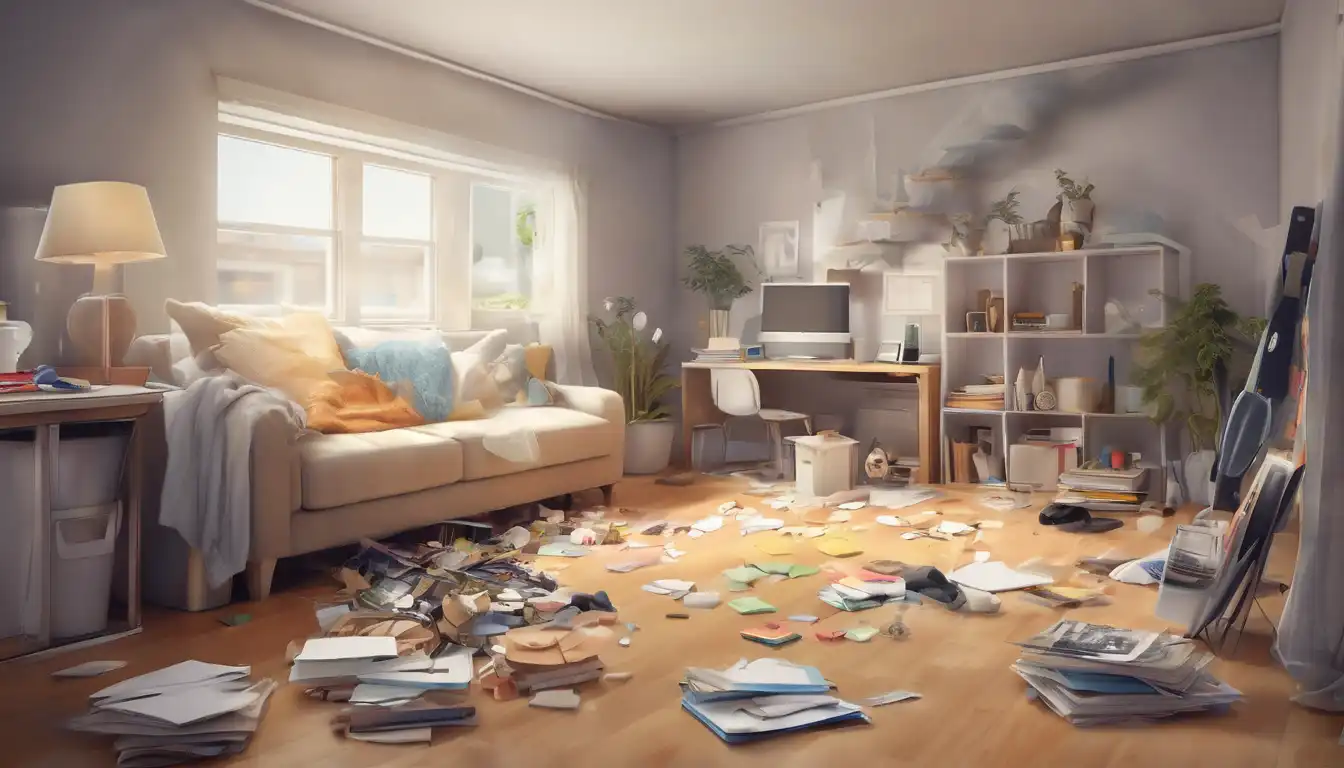Transform Your Home with These Efficient Decluttering Methods
Living in a cluttered environment can significantly impact your mental well-being and daily productivity. Many people feel overwhelmed by the thought of organizing their entire home, but with the right approach, you can achieve remarkable results quickly. This comprehensive guide will walk you through practical steps to reclaim your space and create a more peaceful living environment.
Prepare Your Decluttering Mindset
Before diving into the physical process, it's crucial to establish the right mindset. Start by setting realistic expectations – you won't transform your entire home in one day. Instead, focus on making consistent progress. Visualize your ideal living space and keep that image in mind throughout the process. Remember that decluttering is about creating a home that serves your needs, not achieving perfection.
Gather essential supplies before you begin: sturdy boxes or bins for sorting, garbage bags for disposal, and cleaning supplies for the newly cleared spaces. Having everything ready will make the process smoother and more efficient. Consider setting a timer for each session to maintain focus and prevent burnout.
The Four-Box Method: Your Decluttering Foundation
The four-box method is a proven system that simplifies decision-making. Label four containers as: Keep, Donate/Sell, Store, and Trash. As you work through each area, place every item into one of these categories. This method prevents the common pitfall of moving clutter from one place to another without making real progress.
When deciding what to keep, ask yourself these critical questions: Have I used this item in the past year? Does it bring me joy or serve a practical purpose? If I needed this item tomorrow, would I know where to find it? Be honest with your answers – sentimental items can be particularly challenging, but remember that memories reside in you, not in objects.
Room-by-Room Action Plan
Kitchen Decluttering Strategy
The kitchen often becomes a dumping ground for various household items. Start with countertops – clear everything off and only return items you use daily. Evaluate appliances: if you haven't used something in six months, consider donating it. Organize cabinets by category (baking supplies, dinnerware, etc.) and use drawer dividers for utensils.
Check expiration dates in your pantry and refrigerator. Group similar items together and consider implementing the first-in-first-out system for food storage. This not only reduces clutter but also minimizes food waste.
Living Room Organization
Living rooms tend to accumulate miscellaneous items from throughout the house. Begin by clearing surfaces like coffee tables and entertainment centers. Sort through media collections – do you still need those DVDs or CDs? Consider digitizing content to save physical space.
Evaluate decorative items and furniture. Does each piece serve a purpose or bring you joy? If not, it might be time to let it go. Implement smart storage solutions like ottomans with hidden compartments or floating shelves to maintain organization.
Bedroom Sanctuary Creation
Your bedroom should be a peaceful retreat. Start with the closet – a common clutter hotspot. Use the seasonal rotation method to store off-season clothing. Be ruthless with clothes you haven't worn in over a year.
Clear nightstands and dressers of unnecessary items. Create designated spaces for jewelry, accessories, and personal items. Under-bed storage containers can be excellent for seasonal items or extra bedding while keeping them out of sight.
Maintaining Your Decluttered Space
The real challenge begins after the initial decluttering session. Establish daily habits to prevent clutter from accumulating again. Implement the "one-minute rule" – if a task takes less than one minute, do it immediately. This includes hanging up coats, putting away mail, or returning items to their proper places.
Schedule regular maintenance sessions – perhaps 15 minutes each evening or a more thorough session once a week. Many people find that implementing a minimalist approach to new acquisitions helps maintain their organized space. Before buying new items, consider where you'll store them and whether they truly add value to your life.
Digital Decluttering: The Modern Necessity
Don't forget about digital clutter, which can be just as overwhelming as physical clutter. Organize computer files into logical folders, delete unnecessary emails, and streamline your digital photo collection. Consider using cloud storage for important documents to reduce physical paperwork.
Digital organization extends to your phone as well. Delete unused apps, organize remaining apps into folders by function, and regularly clear your photo gallery. A digital detox can significantly reduce mental clutter and improve focus.
Overcoming Common Decluttering Challenges
Many people struggle with sentimental items or fear of needing something later. For sentimental objects, consider taking photos instead of keeping the physical items. For items you're unsure about, use the "maybe box" method – store them for a set period (3-6 months) and if you haven't needed them, let them go.
If you feel overwhelmed, break tasks into smaller chunks. Focus on one drawer, one shelf, or even one category of items at a time. Celebrate small victories – each cleared space is progress toward your goal.
The Benefits of a Decluttered Home
A well-organized home offers numerous benefits beyond just visual appeal. You'll save time searching for items, reduce stress levels, and create a more functional living environment. Many people report improved sleep quality and increased productivity after decluttering.
Decluttering can also have financial benefits – you might rediscover items you forgot you owned, reducing the need for new purchases. The process of letting go of unnecessary possessions often leads to a greater appreciation for what truly matters in life.
Remember that decluttering is an ongoing process rather than a one-time event. As your life changes, your organizational needs will evolve. Regular reassessment of your space and possessions will help maintain the peaceful, functional home you've created. Start with one small area today – you'll be amazed at how these simple steps can transform your living environment and overall quality of life.
